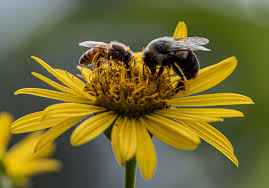
Nectar factories
As gardeners we have always known this, gardens are not just for us! Each of us from the tiny city courtyard to the large acres of a country garden, know now more then ever that our gardens are part of the wildlife corridors that knit together to form a larger wildlife habitat and link to the surrounding countryside and the wider environment. So we need to feed the guests to our gardens and this all starts with the insects. Here are some good Nectar factories to add to your garden.
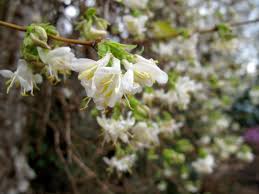
Lonicera x purpusii ‘Winter Beauty’
Lonicera x purpusii ‘Winter Beauty,: A wonderful winter flowering shrub. With good nectar for insects still feeding in the mid winter months. A messy mounding habit up to 2m high. Bare stems have clusters of white cream highly scented flowers. Produced January and February and up to early March. Grow full sun to dappled shade on any well drained fertile soil.
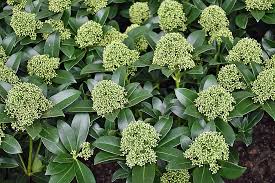
Skimma japonica ‘Kew Green’
Skimmer japonica ‘Kew Green’: A good small shrub for a shady spot. A dense mound habit with ever green glossy foliage. Clusters of tight flower buds, the shape of a cone cover the shrub from late winter, the white/green flowers open late February, March, into April they are very fragrant and offer a good nectar source at a lean time of year. After flowering clusters of bright red berries form. A male and Female form need to be planted together to get the berries. About a meter tall. Humus rich moist soil in semi to dark shade.

Ceanothus burkwoodii
Ceanothus Burkwoodii: a mound forming medium sized shrub up to 2.5m in height. With small dark green leaves, forming a dense habit. Clouds of small puffy blue flowers are produced May into June and the insects go wild for them. A Ceanothus is a dramatic addition to a mixed planting scheme having the wow facture with the flowering on mass. Full sun good fertile soil. Please Note: Ceanothus are not long lived shrubs.

Lavendula x intermedia ‘Grosso’
Lavendula x intermedia ‘Grosso’: This is a superb lavender with long very aromatic sliver leaves forming an evergreen bush up to 70cm tall. It has very long flower stems 50/60cm tall with long generous flowers of 7/8cm in length. Bigger flowers means more nectar and more room for a crowd of insects. The flowers are also fragrant with a soft lavender colour. Produced a little latter than English lavender end of June into July and flowering on into August. The buzz over a lavender hedge is almost deafening in summer. Full sun, well draining to poor soil.
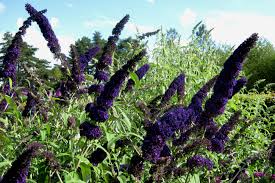
Buddieja davidii ‘Black Knight’
Buddleja davidii ‘Black Knight’: The humble Buddleja, a constant and primary colonizer of railway tracks and old building sites is not called the butterfly bush for nothing. As shrubs go the habitat is not beautiful, crowded groups of vertical stems, left to themselves would produce a shrub 3 to 4m tall and even wider. But they can be hard pruned in early spring to a 1/3 of their size so you can see the flowers as well. This is a dark purple flowering form with large long clusters of small flowers held at the end of the stem. Flowering end of June July and into August and September. Butterflies go completely mad for it and when they are in full flower butterflies of different varieties can be seen hovering to find a free flower. Best grown in full sun but can tolerate some dappled shade. Will grow in any free draining ground.
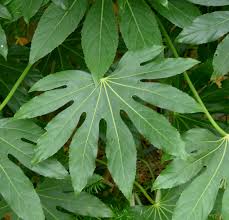
Fatsia japonica
Fatsia japonica: A striking evergreen shrub, with large palmate leaves. Reaching 2.5m or above in height. Branching flower spikes holding a cluster of creamy flowers are produced at the end of November and into December, the flowers start to open mid November to early January, The ivy bee to name one insect is a keen visitor, with Fastias positively humming at this time of year. By April into May the flowers have turned into clusters of dark black berries another food source for birds.
Top Tip: Think about all the different insects that feed on nectar not just the obvious bees. Try to make your plant choices to suit as wide a range of different insects. See if you can included nectar source plants for every month of the year in your garden or at least one for each season. The small selection I have given above, cover most of the year.
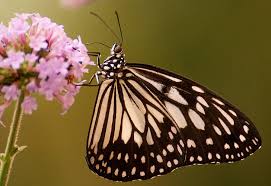
I hope I have inspired you to think about all the uses and habitats your planting choices create. If you want help redesigning a section of your garden so that can produce food for wildlife, then do please give me Emily a ring 01273 470753. I would be delighted to discuss your garden project with you.
